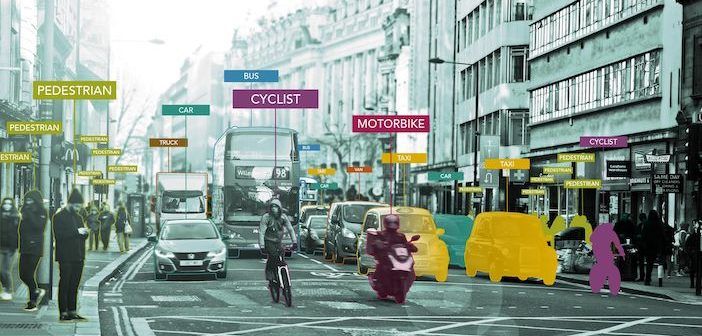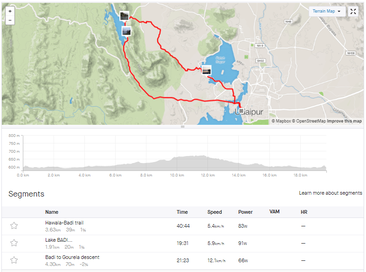Mark Nicholson, founder and CEO of Vivacity Labs – a firm that uses AI and computer vision approaches to gather better data for real-time optimisation of the road networks – give his opinion on how the right data can help to safeguard and further stimulate the active travel revolution seen during the coronavirus pandemic.
The pandemic has been pivotal in changing travel trends in our cities. Levels of active travel, such as walking and cycling, have increased, and shifts in attitudes towards commuting and flexible working are emboldening a new era for how and when we travel. In turn, this has produced a critical impetus for sustainability and a green recovery. With lockdowns, restrictions and travel regulations in constant flux, the value of journeys and how we move around and connect with our cities has been both reiterated and reevaluated, with active travel becoming a main protagonist in the script for green cities.
These renewed focuses have resulted in the popup of new initiatives. Closed-off streets for cyclists and pedestrians and segregated lanes are becoming all the more common with each turn you take – changes which now seek to gain long-term, rather than temporary, status. Because of this, infrastructure changes and active travel initiatives must go hand in hand in order to garner long-term changes; change in infrastructure must come with new attitudes, and vice versa.

Hyperlocal insight
The ability to assess the effectiveness of such schemes all comes down to data. Data insight provides the means with which to analyse multimodal travel trends through counts (e.g. 10 cyclists, 4 pedestrians), behaviours and speeds of road and path users, helping to improve infrastructure and assess active travel initiatives. This can all be accumulated through AI sensors placed at specific junctions or positions along target routes.
Collecting this anonymous data on the coverage of cycle lanes is incredibly valuable, with a single AI sensor able to provide data for a segregated cycle lane, a footpath next to the road, and a mixed carriage way, for example. Councils can therefore download anonymous data from dashboards and use it to gather insights; a single sensor can show overall changes in travel with lockdowns, show micro-trends in local active travel uptake, and monitor the benefits (or challenges) of road space reallocation and active travel schemes.

Widening the lens
However, this is specific data captured with a hyperlocal filter. Other technologies help to fill in the data gaps between sensors and assess macro trends. For example, Strava is an app that harnesses both geospatial technology and a social media format to encourage runners and cyclists to track their progress and post activity to their friends and followers, including features such as leaderboards and exploring new routes. Crucially, it also allows for anonymous and aggregated data insight into physical travel; its Strava Metro platform represents a substantial collection of human-powered transport information, providing an invaluable resource for urban planners. However, with Stava often only being used by keen cyclists and runners, its data doesn’t include the everyday active travel users not on the app.
Another great example is See.Sense, an exciting company that produces connected bike lights. Users are able to opt-in to send back anonymised location data from their bike lights and provide feedback, creating datasets for aspects such as movement patterns, popular routes, road conditions and near-miss events. This helps to provide wide area network coverage, but with lower sample rates than AI sensors, which provide the high-fidelity, hyperlocal side. Collaboration between different yet complementary technologies and companies will only serve to further enhance our capabilities and insight for active travel.
The truth of the matter
Of course there is controversy around some active travel interventions and road layout changes. Complaints such as infringement on car space, increased congestion and a lack of adequate public consultation have led to the removal of certain schemes. Data can provide objective truths into these debates – for example, it can assess the ‘before, during and after’ results of initiatives, demonstrating whether new road changes are being used by cyclists, the effect on other road users and helping to judge whether schemes have contributed to mode shift in travel.
Furthermore, for these initiatives to work, retaining long-term funding is fundamental to enabling and securing changes in travel behaviour. Again, data is the key. With the next stage of tranche 2 Government funding for longer-term active travel initiatives now available, data has a crucial role to play in proving value for money as we continue into 2021.

2021 – what’s to come?
Before 2020, findings revealed that over 60% of journeys in the UK between one and two miles were made in cars. As a society, we need to progress beyond this, and use cycling, walking and public transport to move away from private vehicles. Providing data on these shorter journeys could be a massive help in allowing transport interventions which encourage active travel. Looking ahead, the evolution of our transport network with micromobility will be fascinating; do e-scooters encourage users who would normally use a car for short journeys to use an e-scooter instead? Or will it take away from pedestrian and cycling users? As their popularity builds week on week, the interactions between e-scooters and other road users promises to provide some exciting decisions and debate to come.
In order to convince authorities, councils and the public to buy into active travel schemes, accurate, local data is a critical source for supporting intelligent design of changes to our cities, and demonstrating the value of those interventions. Better, safer space and priority for active travel should increase its uptake, especially over shorter journeys, feeding back into societal imperatives such as climate change. With a return to some normality on the cards this year, counteracting a profligate way of living and travelling with healthier, sustainable alternatives is becoming more and more urgent. Data is becoming the key player in the future of active travel and the green recovery.





